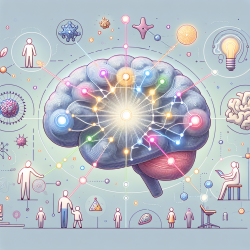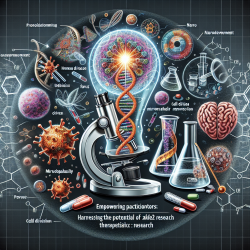Introduction
In the realm of autism research, the interplay between structural and functional connectivity in the brain has long intrigued scientists. The study titled Abnormal functional connectivity during visuospatial processing is associated with disrupted organisation of white matter in autism offers groundbreaking insights into this complex relationship. This research provides a roadmap for practitioners to enhance their understanding and skills in addressing the unique challenges faced by individuals with Autism Spectrum Disorder (ASD).
The Essence of Connectivity
Autism is often characterized by disrupted neural connectivity, both structurally and functionally. The study delves into how abnormalities in white matter (WM) microstructure contribute to atypical functional connectivity during visuospatial tasks. By employing advanced imaging techniques like diffusion MRI and functional connectivity MRI, researchers have identified specific brain regions where connectivity is compromised in individuals with ASD.
Key Findings and Implications
The study reveals that certain white matter tracts directly connect brain regions exhibiting abnormal functional connectivity in ASD. Notably, the research highlights reduced microstructural organization in tracts linking the left occipital lobe (left BA19) to the left caudate head and left thalamus. This suggests that structural brain pathology may underlie the functional connectivity anomalies observed in autism.
For practitioners, these findings underscore the importance of considering both structural and functional connectivity when developing therapeutic interventions. By understanding the specific neural pathways involved, educators and therapists can tailor strategies to enhance connectivity and potentially improve cognitive and behavioral outcomes for individuals with ASD.
Practical Applications
- Customized Interventions: Tailor interventions to target specific neural pathways identified as disrupted in ASD. This personalized approach can enhance the effectiveness of therapy.
- Multimodal Imaging: Utilize advanced imaging techniques to monitor changes in brain connectivity over time, providing valuable feedback on the efficacy of interventions.
- Collaborative Research: Encourage collaboration between researchers, educators, and therapists to integrate findings from neuroimaging studies into practical applications.
Encouraging Further Research
While this study provides valuable insights, it also highlights the need for further research to explore the intricate relationships between structural connectivity, functional connectivity, and behavior in autism. Practitioners are encouraged to stay informed about the latest advancements in neuroimaging and to consider participating in collaborative research efforts.
Conclusion
The study on abnormal functional connectivity and white matter organization in autism opens new avenues for understanding and addressing the challenges faced by individuals with ASD. By integrating these findings into practice, educators and therapists can play a pivotal role in improving the lives of those on the autism spectrum.
To read the original research paper, please follow this link: Abnormal functional connectivity during visuospatial processing is associated with disrupted organisation of white matter in autism.










